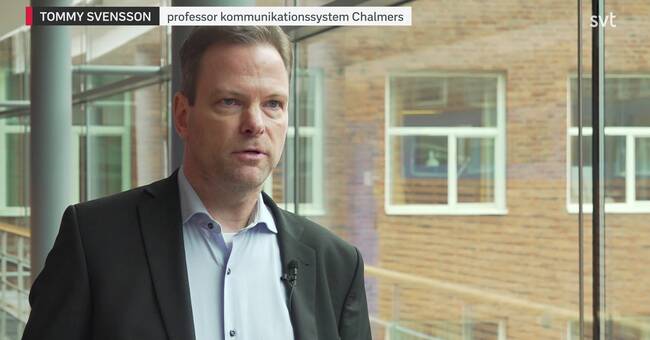The fifth generation internet is so far only available in a few places in Sweden, but this year it is assumed that the rollout will take off.
And the work with the technology that will be transferred after the 5G network has not yet been rolled out is already in full swing.
Europe wants to lead that work and started an EU project at the turn of the year.
Sweden includes a project managed by Chalmers in Gothenburg.
Virtual glasses starting point
Tommy Svensson, professor of communication technology at Chalmers, describes the development as follows: With the fourth generation, 4G, we got internet in our mobile phones in our pockets.
With 5G, it has continued towards higher capacity, better video resolution and the possibility of remote control of equipment.
In the home, or the vehicle.
Surgeons can in principle operate on a patient at a distance, without being in the operating room themselves.
- With 6G, the idea is to connect the digital world with the physical, human world.
We may get senses other than sight and hearing.
Virtual glasses can be a starting point, but there will be more.
You may be able to attend a dinner even though you are in isolation at home.
Maybe you can get something that feels like a hug, even if you are not there, says Tommy Svensson.
"Digital twins"
According to Svensson, the industry has started talking about "digital twins:" To create a representation of a real world, and use that copy to mark if there is a risk of problems in reality.
A change in our environment when 6G comes applies to the antennas.
They will remain, but for radio communication to be as accurate as required, many small antennas are needed - perhaps one antenna in each room.
May be fully developed by 2030
- Small antennas can send and receive higher carriers, up to the terahertz area.
Then there will be very low effects.
The signaling will be accurate, and we can walk around obstacles on the road, says Tommy Svensson.
- Today you can see 4G as a spotlight that stands outdoors and lights up the apartment through the window.
6G maybe we can think of as LED lights.
We can control and turn on or off exactly what is needed there and then.
Like when you walk in a basement corridor and have lighting that follows you and is switched on and off as needed, says Tommy Svensson.
The goal is for 6G to be available by 2030.

